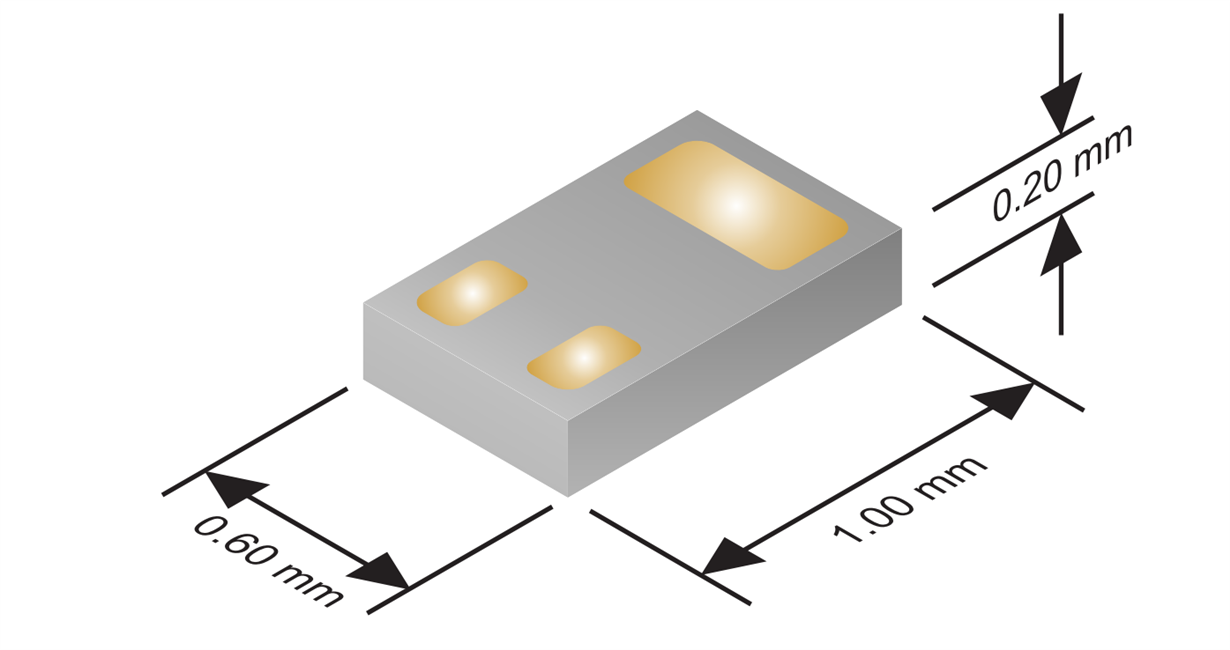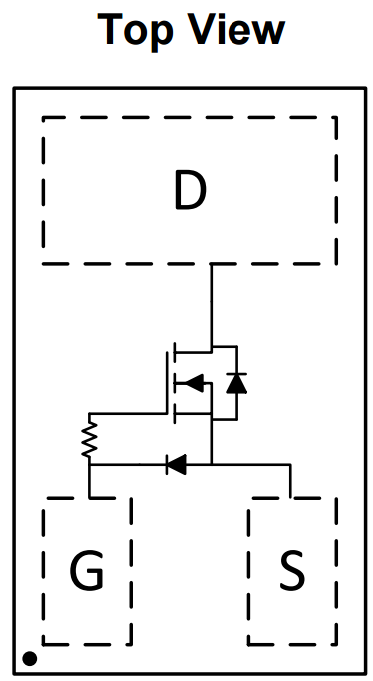-
A Power MOSFET That Boldly Goes Where No One Has Gone before SSZTC51 september 2015 CSD17484F4 , CSD25484F4
-
A Power MOSFET That Boldly Goes Where No One Has Gone before
A Power MOSFET That Boldly Goes Where No One Has Gone before
Kevin O'Connell
It continues to amaze me how “Star Trek” predicted future technology progressions. The handheld communicator from “Star Trek: The Original Series” seemed like a marvel when it appeared as a prop on the television show in the 1960s. However, it was big and bulky, and in several episodes the communicator was lost or just stopped working, which made getting beamed back up to the ship impossible.
By the release of “Star Trek: The Motion Picture” in 1979, Capt. James T. Kirk and his crew were wearing the communicator on their wrists, so at least they wouldn’t lose them. It wasn’t until “Star Trek: The Next Generation” that Capt. Jean-Luc Picard wore the communicator on his chest, and the wearable communicator was both a vital piece of equipment and a fashion accessory.
So what were Starfleet Command’s design priorities for communicator functionality? I’d guess reduced size, extended battery life, and ability to charge the device easily. I never saw Lt. Cmdr. Geordi La Forge searching the ship for his lost power cord.
Texas Instruments has a family of power MOSFETs called FemtoFETs that satisfy Starfleet Command’s communicator design requirements. With a body size of 0.6mm by 1.0mm, these microscopic devices can still carry 2-3A of current and pack the smallest resistance x size in the industry. The height of the device can go as low as 0.2mm (see Figure 1 and Figure 2).
 Figure 1 Mechanical Dimensions of
CSD17484F4 and CSD25484F4
Figure 1 Mechanical Dimensions of
CSD17484F4 and CSD25484F4With packages this small, the capability of surface mount technology (SMT) assembly equipment to handle the pitch between device pins is critical. FemtoFET devices maintain a pitch of 0.35mm, which is the process capability limit for state-of-the-art SMT equipment.
 Figure 2 Functional Diagram of an
N-channel FemtoFET
Figure 2 Functional Diagram of an
N-channel FemtoFETFor wearable products, the size and capacity of the battery can be extremely small. To extend battery life, low leakage currents are key. The FemtoFETs boast drain and gate leakage currents that are typically in the single-digit nanoampere range.
With the development of products for the emerging USB Type-C power delivery standard, fast charging applications increase the need for higher currents through some circuit paths. Wireless charging can also pump higher currents through the power MOSFET, and the FemtoFETs can handle up to 3A due to their advanced metallization and packaging.
In addition to cell phones, FemtoFETs can be found in wrist watch communicators, wearable fitness monitors, wearable cameras, blood glucose meters, jewelry, and even devices implantable into the human body. These FemtoFETs will continue to boldly go where no FET has gone before.
You can bet that a communicator with a FemtoFET won’t leave you stranded on Romulus.
Additional Resources:
- Consider TI’s full range of FemtoFET products for your next design.
- Download the FemtoFET Design Guide.
IMPORTANT NOTICE AND DISCLAIMER
TI PROVIDES TECHNICAL AND RELIABILITY DATA (INCLUDING DATASHEETS), DESIGN RESOURCES (INCLUDING REFERENCE DESIGNS), APPLICATION OR OTHER DESIGN ADVICE, WEB TOOLS, SAFETY INFORMATION, AND OTHER RESOURCES “AS IS” AND WITH ALL FAULTS, AND DISCLAIMS ALL WARRANTIES, EXPRESS AND IMPLIED, INCLUDING WITHOUT LIMITATION ANY IMPLIED WARRANTIES OF MERCHANTABILITY, FITNESS FOR A PARTICULAR PURPOSE OR NON-INFRINGEMENT OF THIRD PARTY INTELLECTUAL PROPERTY RIGHTS.
These resources are intended for skilled developers designing with TI products. You are solely responsible for (1) selecting the appropriate TI products for your application, (2) designing, validating and testing your application, and (3) ensuring your application meets applicable standards, and any other safety, security, or other requirements. These resources are subject to change without notice. TI grants you permission to use these resources only for development of an application that uses the TI products described in the resource. Other reproduction and display of these resources is prohibited. No license is granted to any other TI intellectual property right or to any third party intellectual property right. TI disclaims responsibility for, and you will fully indemnify TI and its representatives against, any claims, damages, costs, losses, and liabilities arising out of your use of these resources.
TI’s products are provided subject to TI’s Terms of Sale (www.ti.com/legal/termsofsale.html) or other applicable terms available either on ti.com or provided in conjunction with such TI products. TI’s provision of these resources does not expand or otherwise alter TI’s applicable warranties or warranty disclaimers for TI products.
Mailing Address: Texas Instruments, Post Office Box 655303, Dallas, Texas 75265
Copyright © 2023, Texas Instruments Incorporated